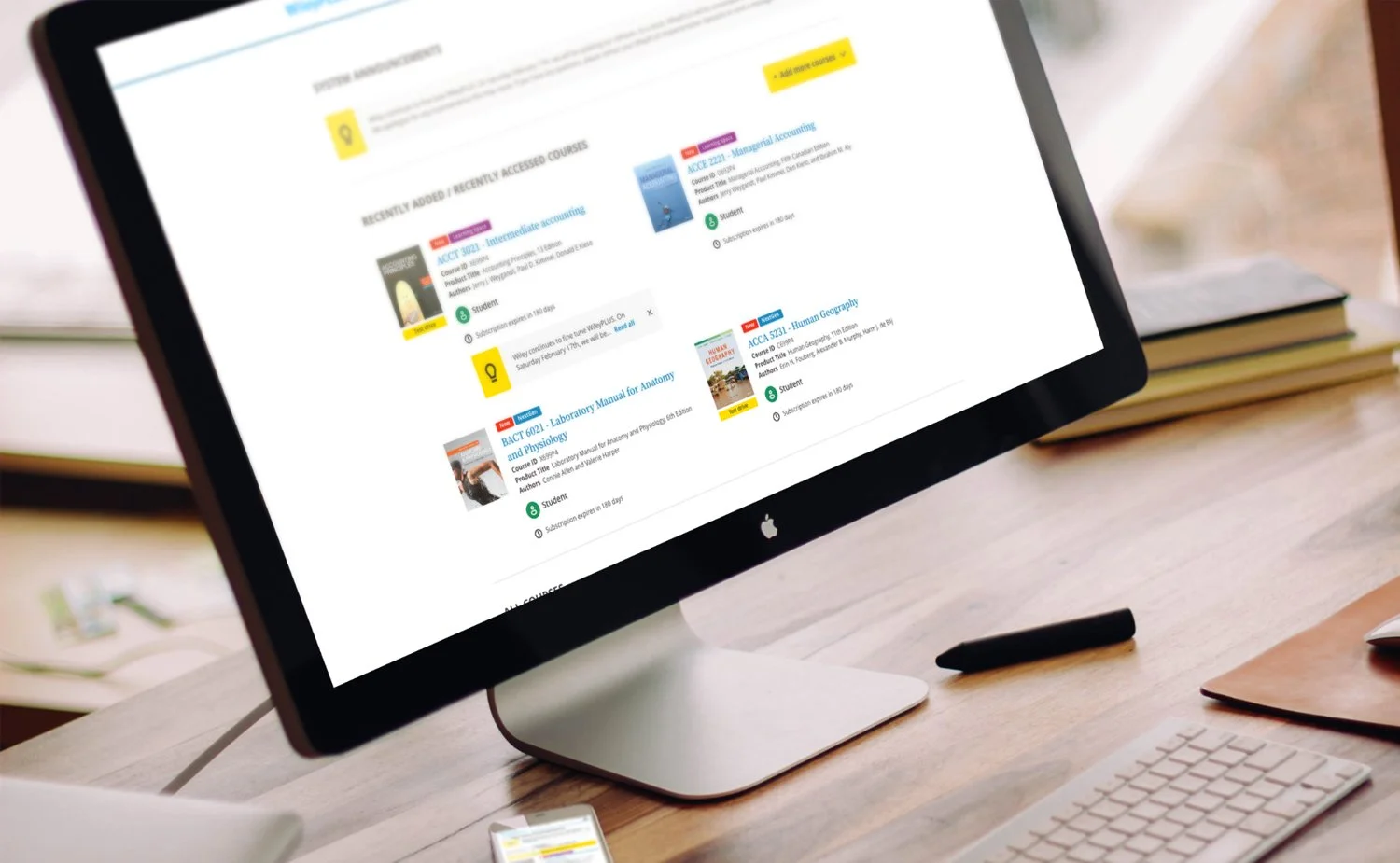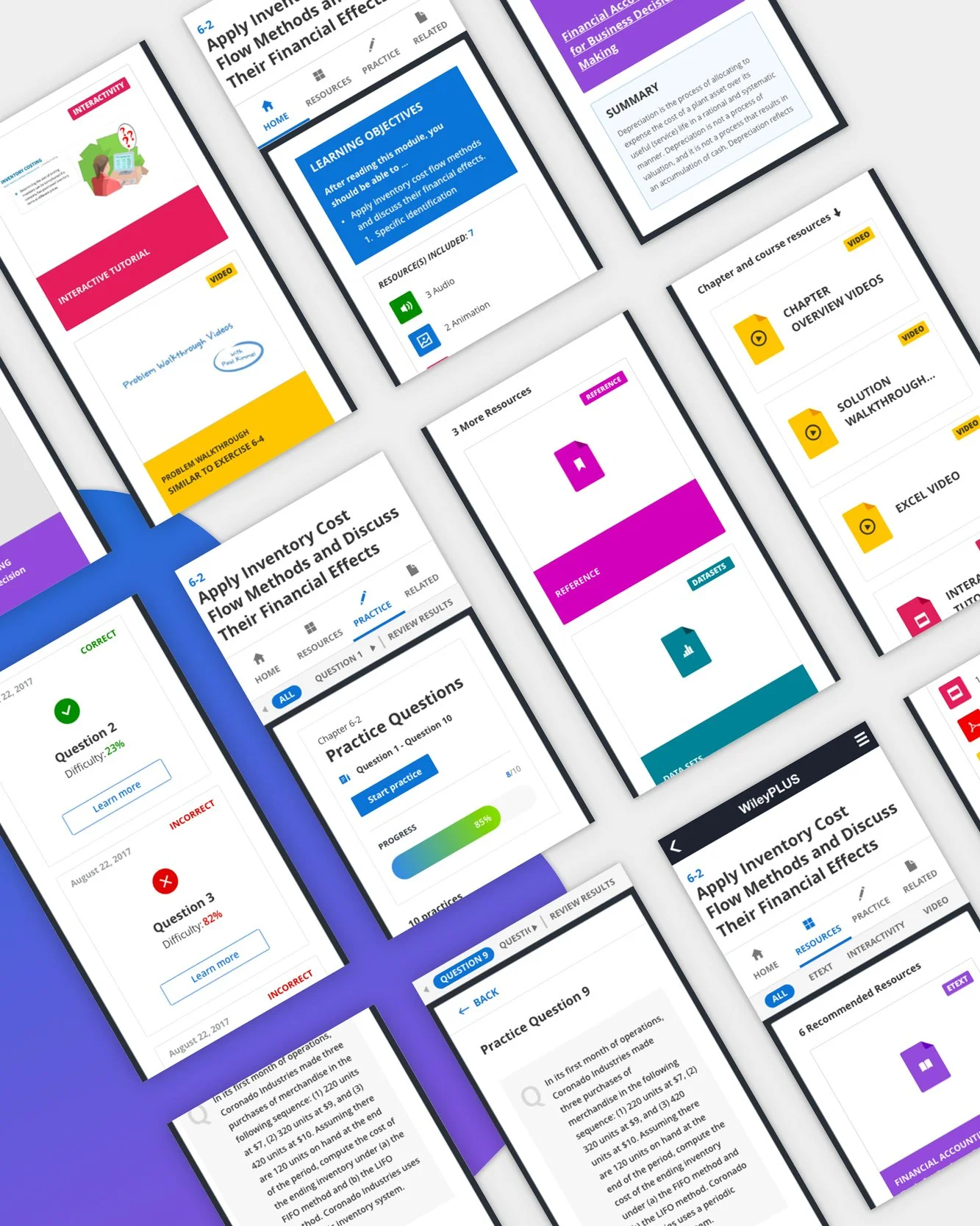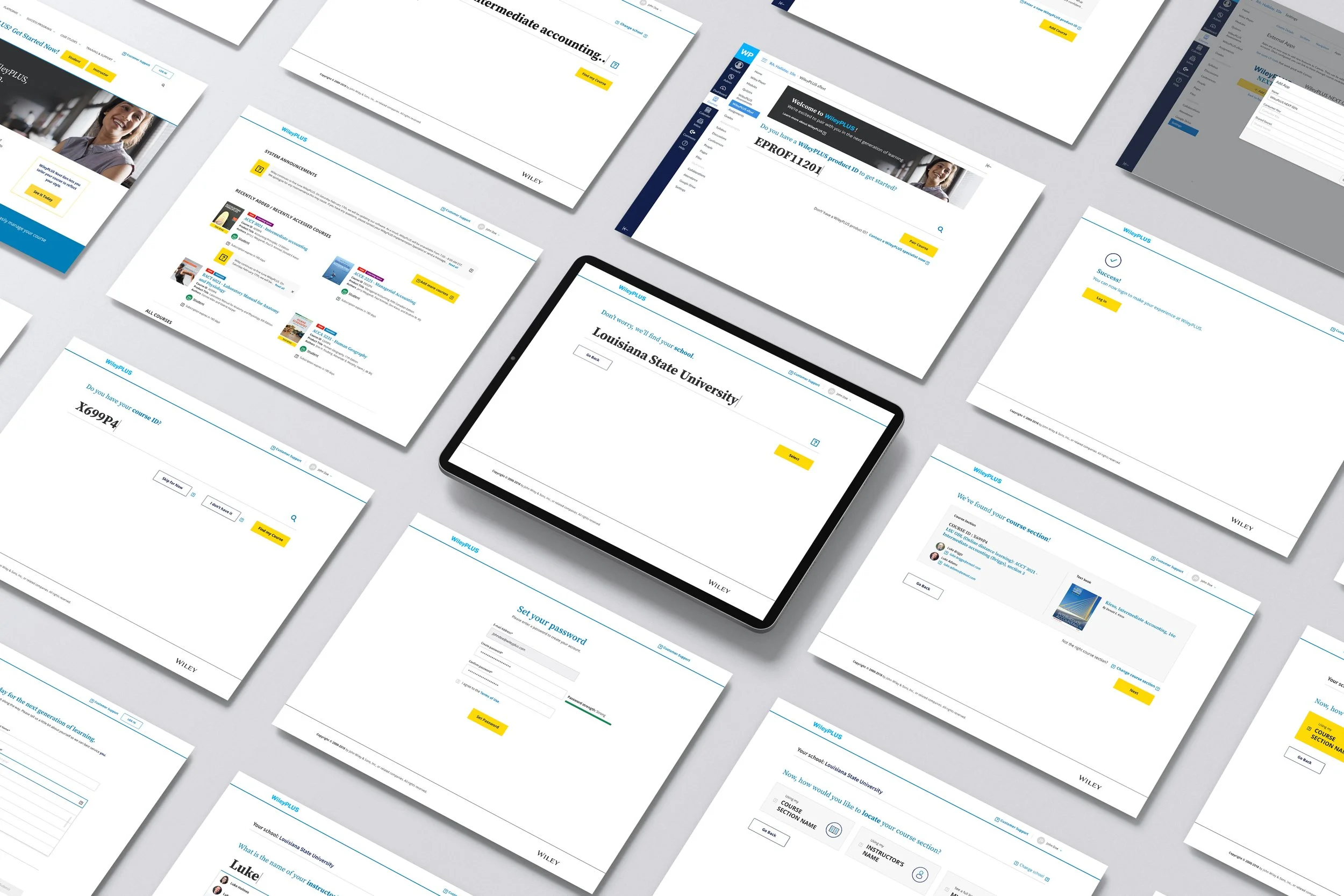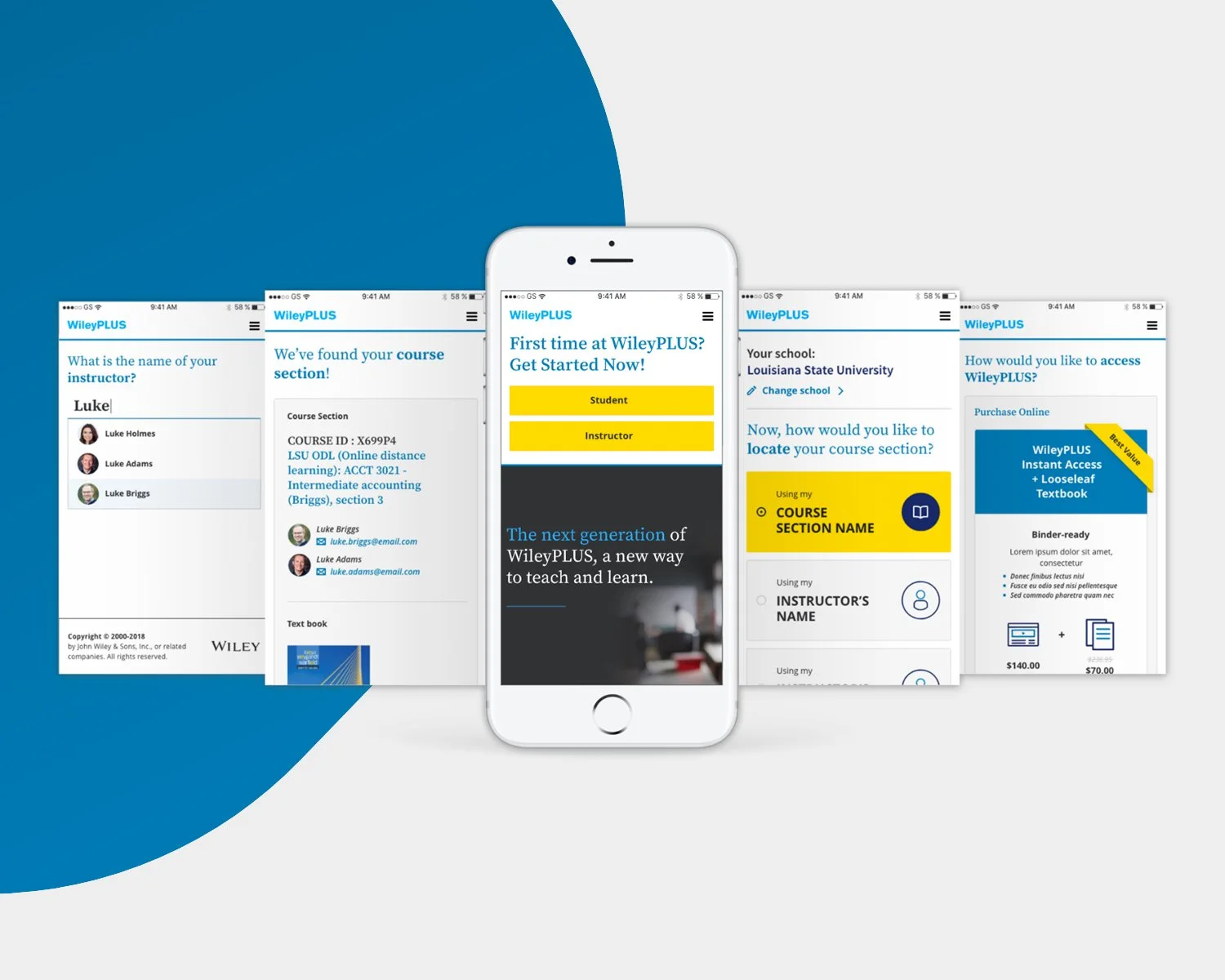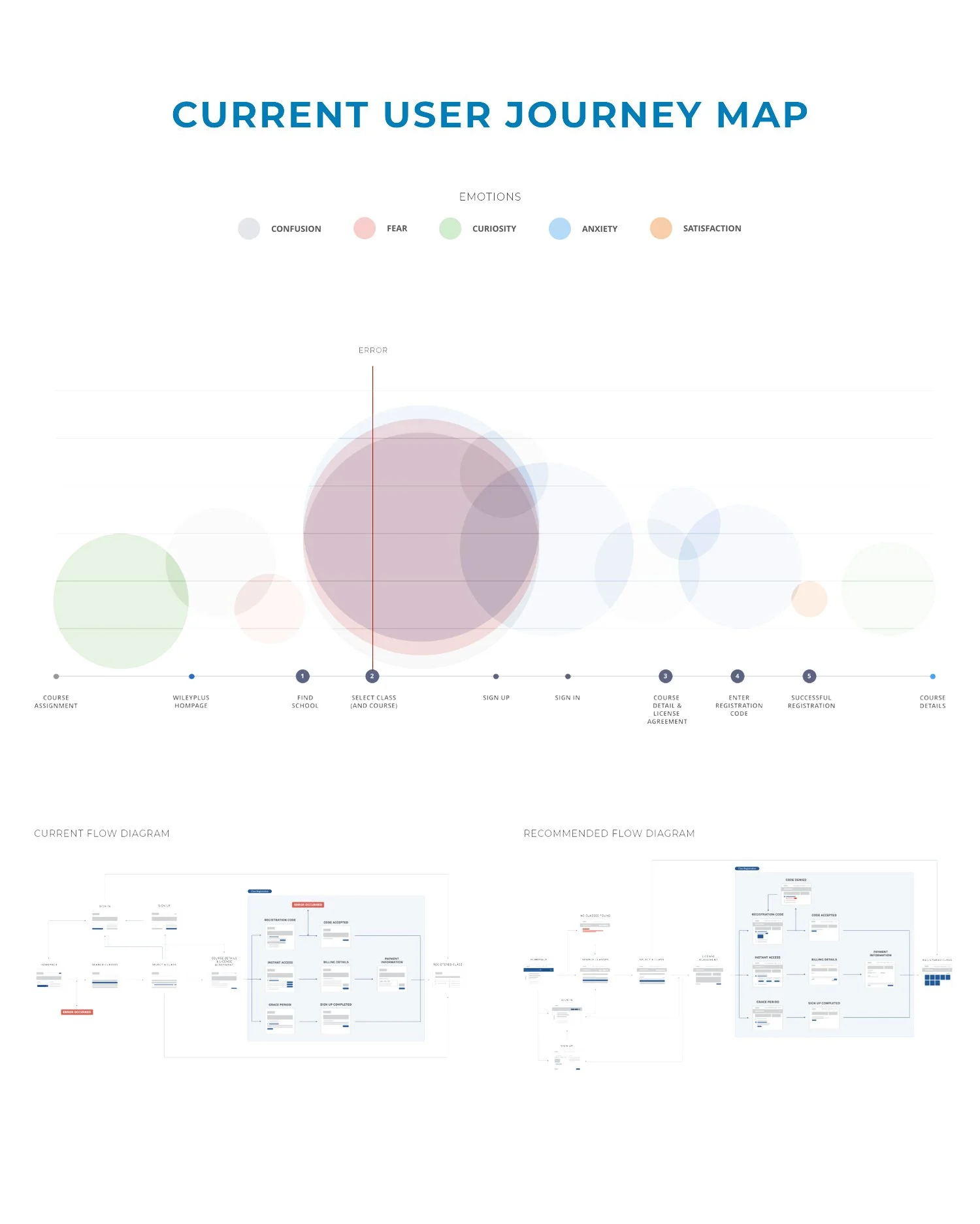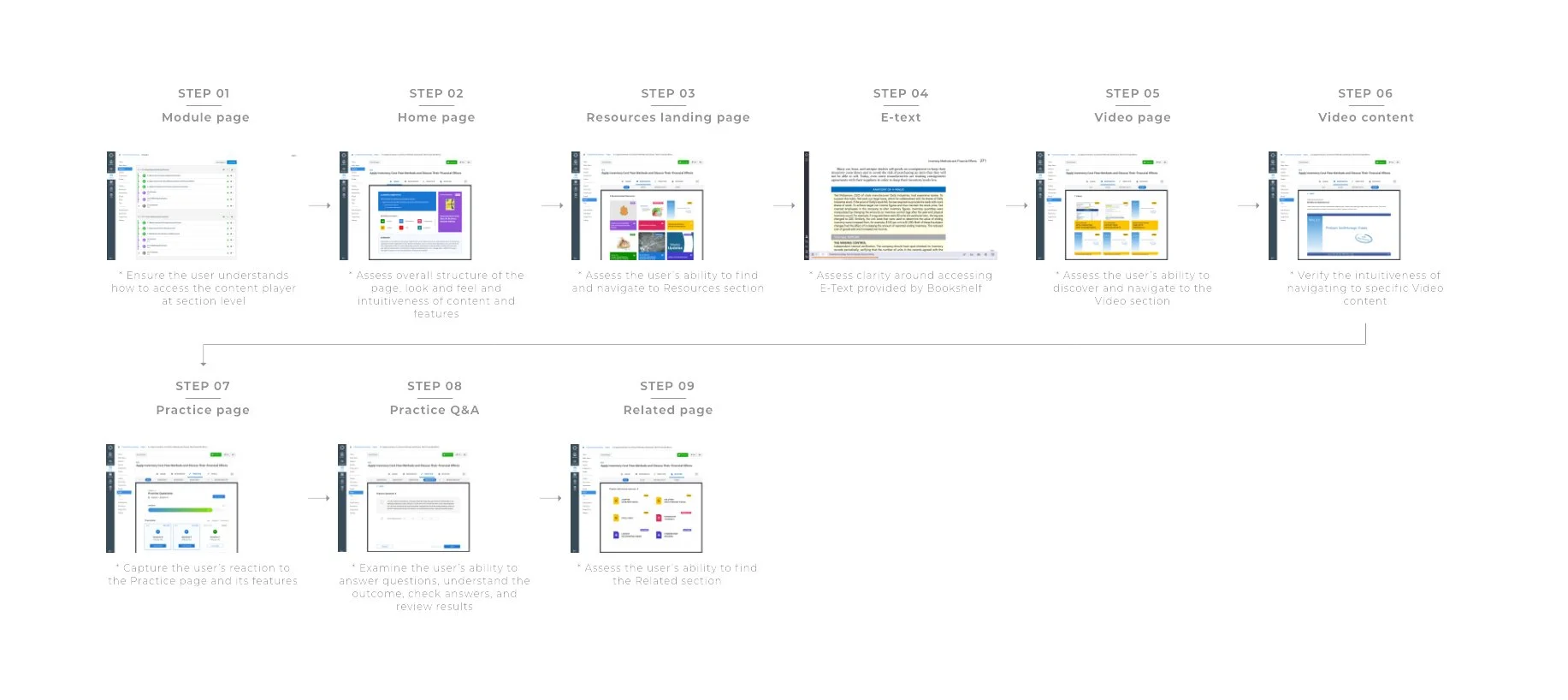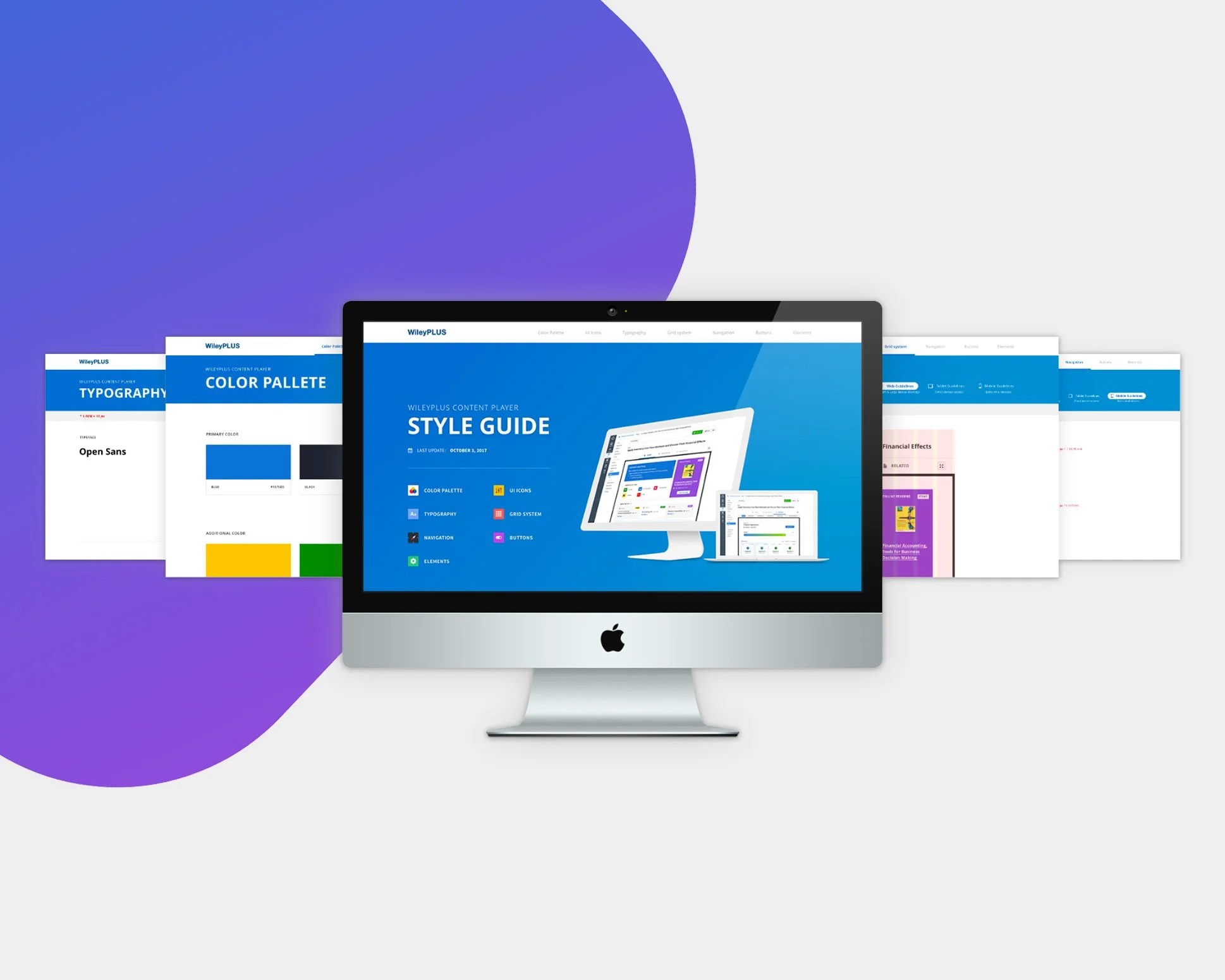
A modernized platform designed to empower both students and professors with efficient course management.
WileyPLUS stands as a leading online platform for higher education, serving the needs of both students and professors across diverse disciplines. To address critical pain points and feedback on existing tools, our team embarked on a research-driven redesign, focusing on simplifying workflows and boosting engagement.
The resulting enhancements yielded a streamlined onboarding process, making it easier for instructors to set up courses and for students to get started. Beyond workflow improvements, we introduced gamification, personalization, community-building features, and peer interactions—all designed to foster deeper engagement and nurture ongoing learning.
My Role & Contributions
I was responsible for identifying user pain points and translating them into actionable design solutions. Key areas of my involvement included:
1. Pain Point Analysis
Investigated recurring bottlenecks in course setup and assignment workflows, benchmarking against competitor solutions to understand industry standards.
2. User Research & Interviews
Conducted in-depth sessions with professors and students to uncover challenges, motivations, and usage patterns, informing prioritized improvements.
3. Workflow Mapping
Mapped existing processes to visualize user journeys, pinpointing where friction occurred and how tasks could be optimized or consolidated.
4. Information Hierarchy
Reorganized course materials, assignments, and grading structures to create a more intuitive framework, ensuring effortless navigation and content discovery.
5. Usability Testing
Led iterative testing cycles to validate design concepts, incorporate user feedback, and refine UI elements for clarity and consistency.
6. UX / UI
Crafted wireframes, prototypes, and high-fidelity designs that seamlessly integrate gamification and community features, enhancing user engagement and platform loyalty.
Impact & Results
• Streamlined Onboarding: Professors reported significantly reduced setup times, and students were able to access course materials with fewer clicks and less confusion.
• Higher Engagement: Gamification elements and community-building tools drove more frequent platform visits and improved course participation metrics.
• Positive User Feedback: Surveys and interviews post-launch revealed improved satisfaction, particularly around intuitive navigation and ease of assignment management.


